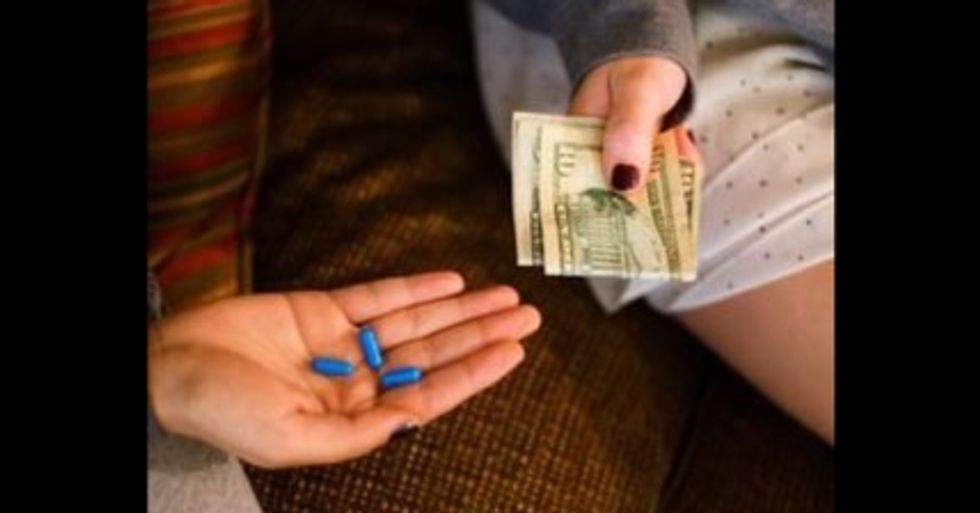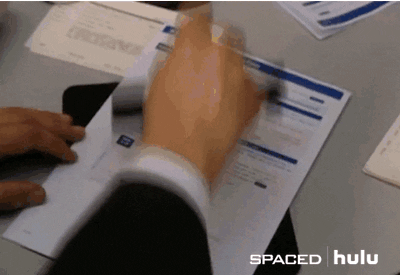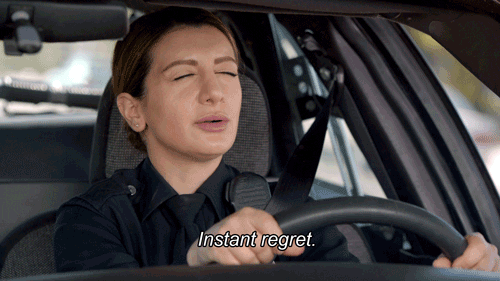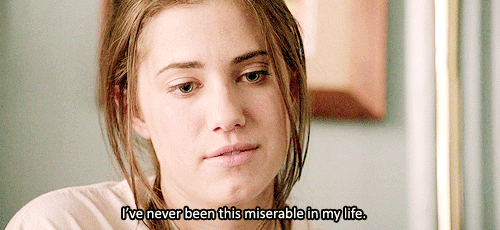Mike* is standing outside of a student’s townhouse. It’s 7:40 p.m. and the bitter November air is chilling him to the bone. It makes sense, he’s wearing basketball shorts and a grey sweatshirt. He bounces up and down to keep his circulation moving; next time he’ll have to remember the change in weather.
He checks his phone religiously to make sure his text to the townhouse inhabitants went through. As much as he feels uncomfortable standing outside, he knows he must go through with this transaction.
Finally, he hears the click of the lock and a tall boy with messy brown hair opens the door. He’s saved from people staring at him waiting outside somebody’s house but mostly, the cold.
“Are you Mike?” the tall boy asks.
“Yeah” Mike responds.
The tall boy nods his head to indicate Mike can go into his house.
Less than 10 minutes later, Mike emerges. He walks quickly from the house with his hood up and his hands shoved in the hoodie pocket.
“That’s Ian*,” Mike says. “I got his number from one of my old roommates. Apparently, he has really strong stuff that lasts more than 12 hours.” He quickly walks back to his house in the cover of night; his breath can be seen anytime he exhales.
He heads to the other end of campus where he lives. Mike shares an apartment with four other people. He considers them “his closest friends.”
Once he enters his home, he immediately unloads the plastic bag hidden in his hoodie pocket. It’s hard to tell, but inside of the bag are five blue capsules.
“I have two papers due tomorrow and a project due on Thursday. Plus, we want to go to a game Wednesday night,” he justifies himself to the capsules.
He goes into his room and locks the door behind him and turns on the small TV facing his bed to give background noise to the situation. It makes him feel more comfortable.
He opens the capsules very careful and hundreds of tiny white beads fall out. Using his school I.D., somewhat of an irony, he crushes the beads. Once they become mostly powder, he separates them into small lines. This takes him three minutes.
He then puts his face to the dark wood table and holds his right nostril shut. His left nostril inhales quickly the white powder disappears, leaving some remnants behind.
Mike lifts his head up and shakes it a little, as if he already has received the rush.
“It’s a quicker effect. It goes straight to your brain from your nose if you snort it,” Mike says. He takes a swig of water and sits down at his desk to start the first paper. The blue capsules have encouraged him.
Mike works tirelessly through the night to get all papers and project done. While it may not be his best effort, it’s enough to earn him “at least a B” and allow him to go to the game. This would not be possible without the blue Adderall capsules.
Mike is just one of hundreds of students that Ian provides “study drugs" for. And while many college students are prescribed Adderall and other ADHD medications, most students who abuse the drug are not.
“We’re talking about a highly abusive drug,” says Dr. Elliot, a psychiatrist who specializes in childhood and adolescent behavior. “People use it to stay focused, get work done, stay awake. Once you take that away from them they aren’t sure how to cope. That’s how it becomes addictive.”
For one of the most abused drugs, most college students don’t realize the consequences of getting hooked.
“I honestly need Adderall when it’s big projects or anything that needs my attention for long periods of time,” says Jennifer*, a junior who is anticipating a high-level internship within her major this summer.
“If I don’t get good grades, then I lose the internship to other applicants who had higher grades,” she says.
Jennifer finds her dealer in her ex-boyfriend’s best friend, Max*. A strange connection to some, but this is how most students find their dealer. To Max, anybody willing to buy is a friend to him.
Enter Max. A relatively normal-looking guy that you wouldn’t look twice at unless you knew his intentions. Max lives in an off-campus house. He believes it makes dealing easier and less likely to get in trouble with his school.
He gets out of his tall Jeep Wrangler and heads inside his small yellow house to start his business for the day. He has three people coming to pick up their order for the next two weeks.
“The second half of the semester is always busier than the first,” Max says. “I think people start to lose motivation after midterms so they need something to help them.”
The first customer arrives, a lanky boy who has just finished pledging his fraternity- his grades have plummeted. Max pulls out a massive bottle of Adderall, clearly intended to last him more than a month.
“How many do you want?” Max asks the lanky boy.
“Seven,” the boy responds quickly.
“fifteen dollars,” Max says, passing the capsules to the boy, an extremely cheap price for how much Adderall typically goes for.
It’s difficult to pinpoint exactly how much Adderall costs to manufacture and sell since every insurance company covers medication differently. But to buy it without insurance coverage can be pricy, with the price ranging from $150-$230 for 30 tablets.
Max’s price is extremely low.
“I charge however much I feel like. It also depends on the person. If my friend sends me their friend, I’ll charge less, but if it’s some random kid I’ll charge more,” Max says. Sometimes if a friend only asks for one or two capsules he gives it to them for free.
Max’s second costumer is none other than Ian. Ian buys 20 tablets, more than half of Max’s dosage for the month. But Max is willing to sell him whatever quantity he wants.
“I usually keep 7-10 for myself, more if I know I need it, but I don’t really like taking it every day. It changes my mood and I’d rather sell mine for extra cash,” Max says.
The endless cycle of selling and buying continues until Max runs out and needs a re-fill on his prescription. The money Max uses from selling his Adderall goes towards his “extra cash” fund which he uses to buy food, alcohol, and weed (another buying and selling cycle).
“It’s impossible to pinpoint which kind of kids sell their prescriptions to other kids,” says Dr. Elliot. “It could be the sweet girl who you’d never take to do that. That’s the biggest problem when you diagnose somebody and give them a prescription.”
The life of a dealer can be scary and dangerous. Max is at risk for expulsion and jail time if he’s caught. Along with the 20+ people he deals to. If his family finds out he loses the trust he’s built with them his entire life. It’s a high-risk situation for a low reward.
But to him, he’s living an average college life- helping students complete assignments and more.
“If I’m not going to use all of it, I might as well sell it.” Max says.
*Names have been changed for anonymity
Mike* is standing outside of a student’s townhouse. It’s 7:40 p.m. and the bitter November air is chilling him to the bone. It makes sense, he’s wearing basketball shorts and a grey sweatshirt. He bounces up and down to keep his circulation moving; next time he’ll have to remember the change in weather.
He checks his phone religiously to make sure his text to the townhouse inhabitants went through. As much as he feels uncomfortable standing outside, he knows he must go through with this transaction.
Finally, he hears the click of the lock and a tall boy with messy brown hair opens the door. He’s saved from people staring at him waiting outside somebody’s house but mostly, the cold.
“Are you Mike?” the tall boy asks.
“Yeah” Mike responds.
The tall boy nods his head to indicate Mike can go into his house.
Less than 10 minutes later, Mike emerges. He walks quickly from the house with his hood up and his hands shoved in the hoodie pocket.
“That’s Ian*,” Mike says. “I got his number from one of my old roommates. Apparently, he has really strong stuff that lasts more than 12 hours.” He quickly walks back to his house in the cover of night; his breath can be seen anytime he exhales.
He heads to the other end of campus where he lives. Mike shares an apartment with four other people. He considers them “his closest friends.”
Once he enters his home, he immediately unloads the plastic bag hidden in his hoodie pocket. It’s hard to tell, but inside of the bag are five blue capsules.
“I have two papers due tomorrow and a project due on Thursday. Plus, we want to go to a game Wednesday night,” he justifies himself to the capsules.
He goes into his room and locks the door behind him and turns on the small TV facing his bed to give background noise to the situation. It makes him feel more comfortable.
He opens the capsules very careful and hundreds of tiny white beads fall out. Using his school I.D., somewhat of an irony, he crushes the beads. Once they become mostly powder, he separates them into small lines. This takes him three minutes.
He then puts his face to the dark wood table and holds his right nostril shut. His left nostril inhales quickly the white powder disappears, leaving some remnants behind.
Mike lifts his head up and shakes it a little, as if he already has received the rush.
“It’s a quicker effect. It goes straight to your brain from your nose if you snort it,” Mike says. He takes a swig of water and sits down at his desk to start the first paper. The blue capsules have encouraged him.
Mike works tirelessly through the night to get all papers and project done. While it may not be his best effort, it’s enough to earn him “at least a B” and allow him to go to the game. This would not be possible without the blue Adderall capsules.
Mike is just one of hundreds of students that Ian provides “study drugs" for. And while many college students are prescribed Adderall and other ADHD medications, most students who abuse the drug are not.
“We’re talking about a highly abusive drug,” says Dr. Elliot, a psychiatrist who specializes in childhood and adolescent behavior. “People use it to stay focused, get work done, stay awake. Once you take that away from them they aren’t sure how to cope. That’s how it becomes addictive.”
For one of the most abused drugs, most college students don’t realize the consequences of getting hooked.
“I honestly need Adderall when it’s big projects or anything that needs my attention for long periods of time,” says Jennifer*, a junior who is anticipating a high-level internship within her major this summer.
“If I don’t get good grades, then I lose the internship to other applicants who had higher grades,” she says.
Jennifer finds her dealer in her ex-boyfriend’s best friend, Max*. A strange connection to some, but this is how most students find their dealer. To Max, anybody willing to buy is a friend to him.
Enter Max. A relatively normal-looking guy that you wouldn’t look twice at unless you knew his intentions. Max lives in an off-campus house. He believes it makes dealing easier and less likely to get in trouble with his school.
He gets out of his tall Jeep Wrangler and heads inside his small yellow house to start his business for the day. He has three people coming to pick up their order for the next two weeks.
“The second half of the semester is always busier than the first,” Max says. “I think people start to lose motivation after midterms so they need something to help them.”
The first customer arrives, a lanky boy who has just finished pledging his fraternity- his grades have plummeted. Max pulls out a massive bottle of Adderall, clearly intended to last him more than a month.
“How many do you want?” Max asks the lanky boy.
“Seven,” the boy responds quickly.
“fifteen dollars,” Max says, passing the capsules to the boy, an extremely cheap price for how much Adderall typically goes for.
It’s difficult to pinpoint exactly how much Adderall costs to manufacture and sell since every insurance company covers medication differently. But to buy it without insurance coverage can be pricy, with the price ranging from $150-$230 for 30 tablets.
Max’s price is extremely low.
“I charge however much I feel like. It also depends on the person. If my friend sends me their friend, I’ll charge less, but if it’s some random kid I’ll charge more,” Max says. Sometimes if a friend only asks for one or two capsules he gives it to them for free.
Max’s second costumer is none other than Ian. Ian buys 20 tablets, more than half of Max’s dosage for the month. But Max is willing to sell him whatever quantity he wants.
“I usually keep 7-10 for myself, more if I know I need it, but I don’t really like taking it every day. It changes my mood and I’d rather sell mine for extra cash,” Max says.
The endless cycle of selling and buying continues until Max runs out and needs a re-fill on his prescription. The money Max uses from selling his Adderall goes towards his “extra cash” fund which he uses to buy food, alcohol, and weed (another buying and selling cycle).
“It’s impossible to pinpoint which kind of kids sell their prescriptions to other kids,” says Dr. Elliot. “It could be the sweet girl who you’d never take to do that. That’s the biggest problem when you diagnose somebody and give them a prescription.”
The life of a dealer can be scary and dangerous. Max is at risk for expulsion and jail time if he’s caught. Along with the 20+ people he deals to. If his family finds out he loses the trust he’s built with them his entire life. It’s a high-risk situation for a low reward.
But to him, he’s living an average college life- helping students complete assignments and more.
“If I’m not going to use all of it, I might as well sell it.” Max says.
*Names have been changed for anonymity


















































